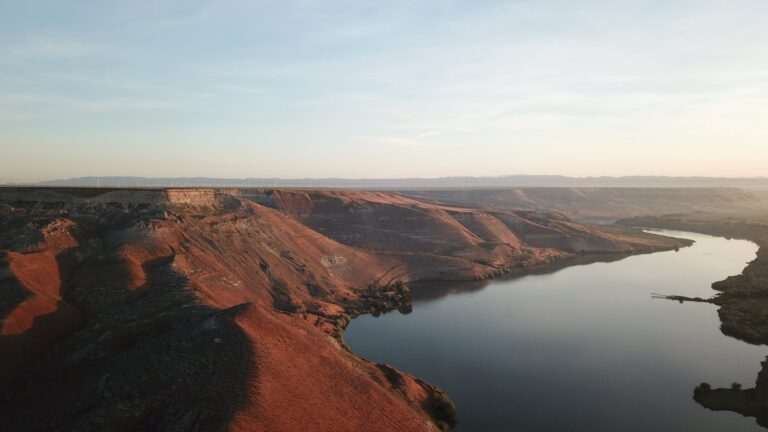
ARCO, Idaho – The National Park Service (NPS) invites members of the public to learn about saber-toothed cats, mastodons, giant ground sloths and other fascinating creatures that once lived in southern Idaho by participating in special fossil exploration events in Hagerman and Pocatello this summer!
The NPS and the Idaho Museum of Natural History are hosting the events to commemorate the 50th anniversary of the designation of the Hagerman Fauna Site National Natural Landmark (NNL). The NNL is located within the Hagerman Fossil Beds National Monument between Boise and Twin Falls. It was designated in May 1975 by then Secretary of the Interior Stanley K. Hathaway in recognition of its internationally significant collection of fossils from the Pliocene era, three to four million years ago.
“The fossil exploration events will be a fun way for kids and adults alike to travel back in time and learn how different the landscape, plants, and animals in their own backyard were, and how they can help us understand the world we live in now,” said Michael Irving, chief of interpretation & education for the Hagerman Fossil Beds National Monument.
The fossil exploration events will be held at the Thousand Springs Visitor Center, located at 17970 U.S. Highway 30 in Hagerman, from 10 a.m. to 2 p.m. on June 18, July 16, and August 20. The fossil exploration events will be held at the Idaho Museum of Natural History, located on the Idaho State University campus at 698 E. Dillon Street in Pocatello, from 10 a.m. to 2 p.m. on June 4, July 2, and August 6. Participants will be able to see and learn about fossils and engage in hands-on activities.
The National Natural Landmarks Program recognizes and encourages the conservation of sites that contain outstanding biological and geological resources. The landmark contains one of the world’s richest sites for Pliocene-aged fossils. The tens of thousands of fossils found here represent hundreds of species of plants and animals, including the world’s largest assemblage of “Hagerman Horse” fossils. Paleontologists continue to conduct research and discover new fossils in the area today.
The landmarks program was established in 1962 with the first site designations occurring in 1964. In 2025, a total of 29 National Natural Landmark sites are celebrating their 50th anniversaries, including the Hagerman Fauna Site National Natural Landmark. The Hagerman National Natural Landmark became part of the Hagerman Fossil Beds National Monument when it was established in November 1988.
Before traveling to the Hagerman Fossil Beds National Monument, visitors are encouraged to check current conditions by viewing the park website at https://www.nps.gov/crmo/index.htm or calling the park Visitor Center at (208) 527-1335.
About the National Park Service. More than 20,000 National Park Service employees care for America’s 430+ national parks and work with communities across the nation to help preserve local history and create close-to-home recreational opportunities. Learn more at www.nps.gov, and on Facebook, Instagram, Twitter, and YouTube.
Photo caption:
The Hagerman Fauna Site National Natural Landmark was designated in 1975 in recognition of its internationally significant collection of Pliocene era fossils.